
Your garden can shine like your neighbor’s with simple steps. Start by mixing compost into the soil for strong plant growth.
Choose plants that fit your climate and sunlight. Water regularly but not too much—like a gentle rain.
Grow tasty veggies and happy herbs with easy tips. Test your soil to know what it needs.
Plant crops that work well together, like tomatoes and basil. Keep weeds away and watch your harvest grow big and bright.
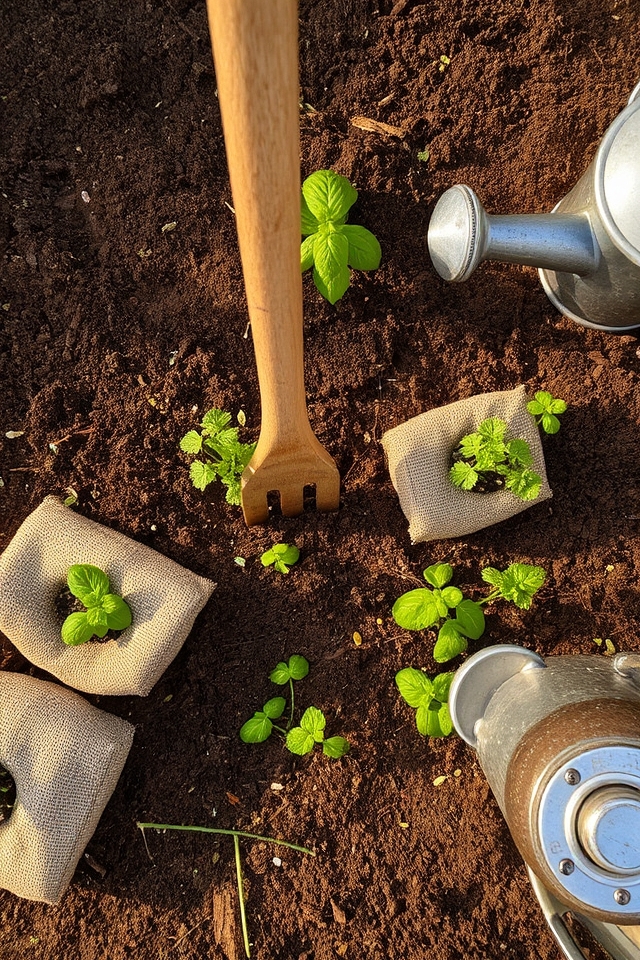
Preparing your soil is an essential step for a successful garden harvest. Start by testing the soil pH to determine its nutrient composition. Amend the soil with organic matter like compost or well-rotted manure to enhance fertility and improve drainage. Tilling the soil will aerate it, promoting root growth. Additionally, consider incorporating natural fertilizers and mulching to retain moisture. A well-prepared soil sets the foundation for robust plant health and bountiful yields.
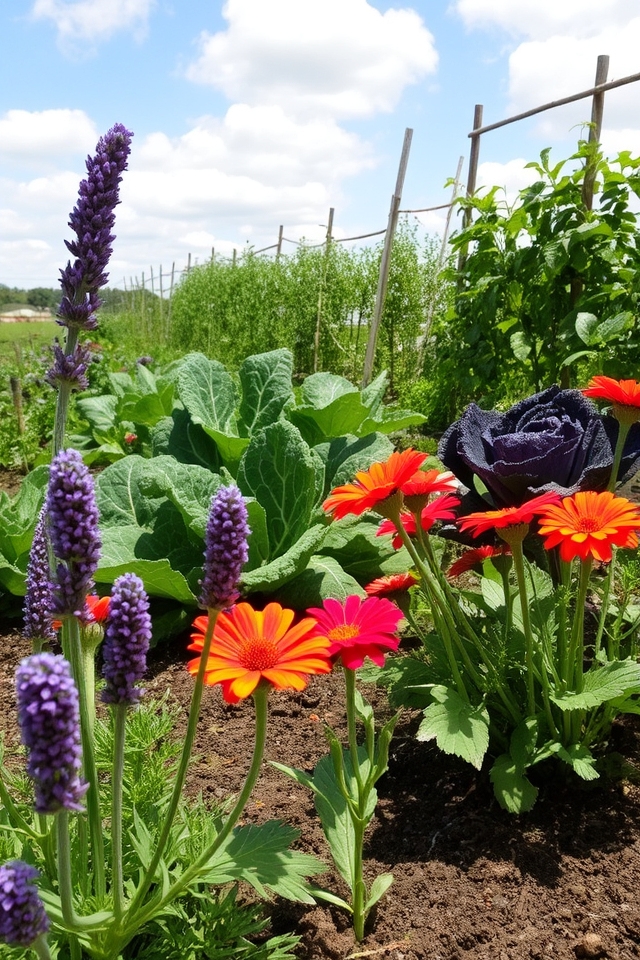
When selecting plants for your garden, it’s vital to take into account your local climate. Different plants thrive in varied temperatures, humidity levels, and soil types. Research your USDA Plant Hardiness Zone to identify suitable species. Opt for native plants that are adapted to your environment, as they require less water and care. Additionally, take into account seasonal factors, such as frost dates and rainfall patterns, to guarantee your garden flourishes throughout the growing season.
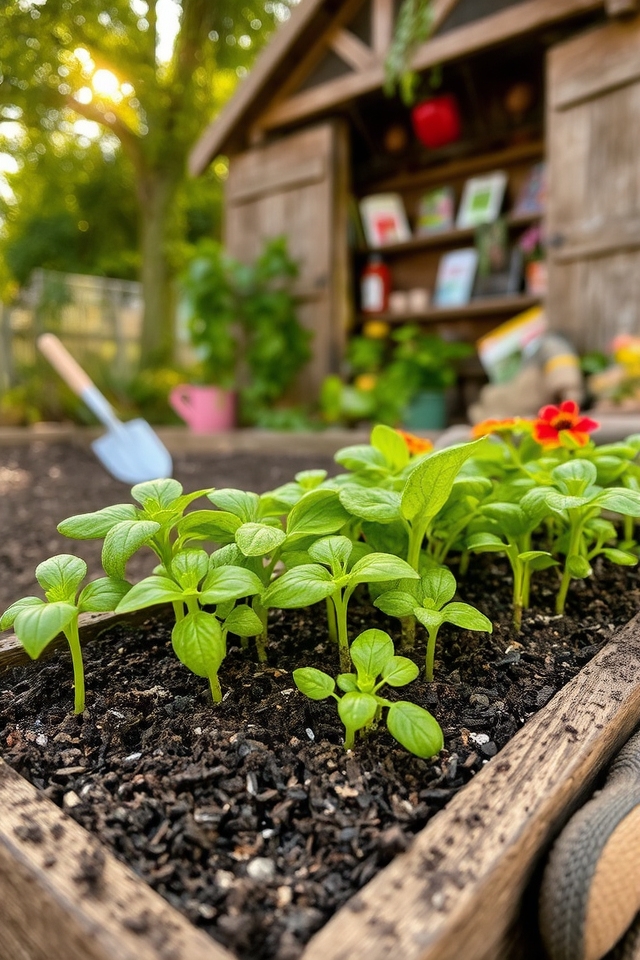
Starting your garden with quality seeds and seedlings is essential for a bountiful harvest. Look for seeds from reputable sources, ensuring they are suitable for your climate and soil type. When selecting seedlings, choose healthy, robust plants with no signs of disease or pest damage. High-quality seeds and seedlings not only promote stronger growth but also increase your chances of yielding abundant fruits, vegetables, and flowers throughout the season. Investing in quality from the beginning sets the foundation for a thriving garden.
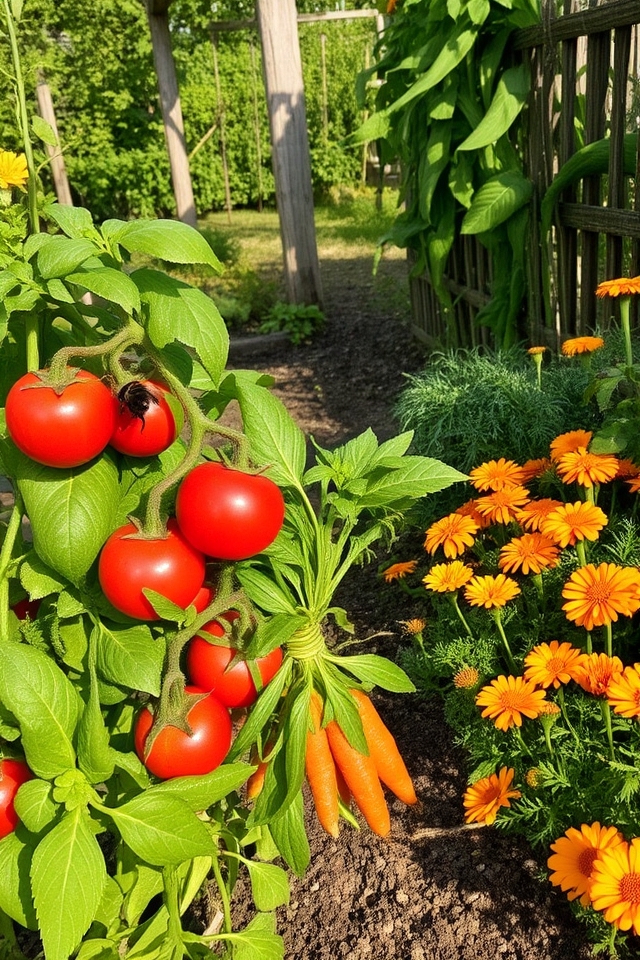
Implementing companion planting strategies can greatly enhance your garden’s productivity and health. By pairing plants that benefit each other—such as tomatoes with basil or carrots with onions—you can improve growth, deter pests, and maximize space. Companion plants can attract beneficial insects, suppress weeds, and even improve soil quality. Incorporating these techniques not only boosts yields but also creates a more diverse and resilient garden ecosystem, leading to a bountiful harvest.
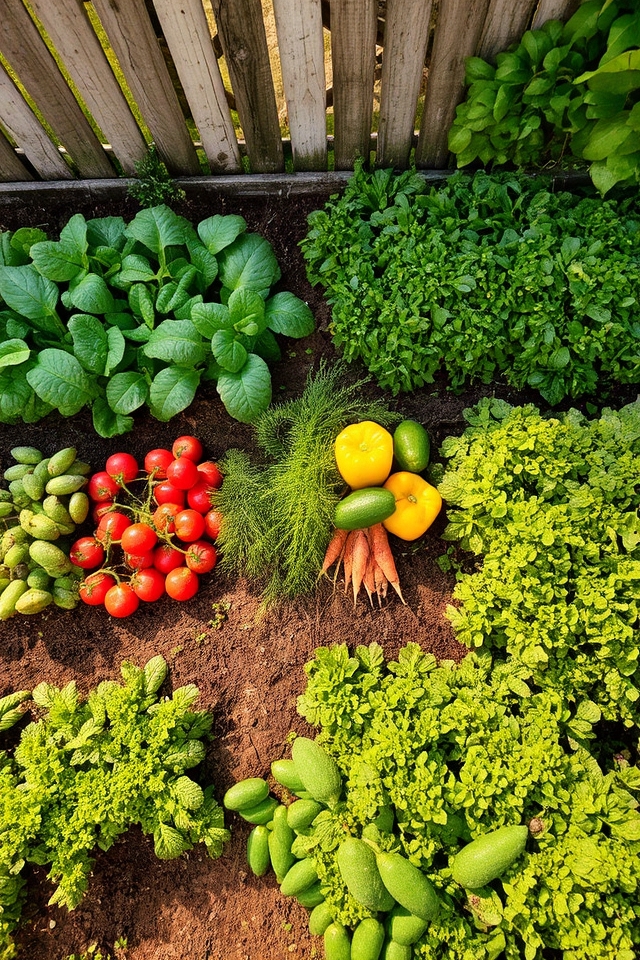
Planning for crop rotation is essential for maintaining soil health and maximizing your garden’s yield. By alternating different plant families in your garden beds each season, you can reduce soil-borne diseases, pests, and nutrient depletion. For example, follow heavy feeders like tomatoes and peppers with legumes, which fix nitrogen in the soil. Keep a rotation schedule to guarantee that each type of crop is planted in different areas year after year, promoting a balanced ecosystem and healthier plants.
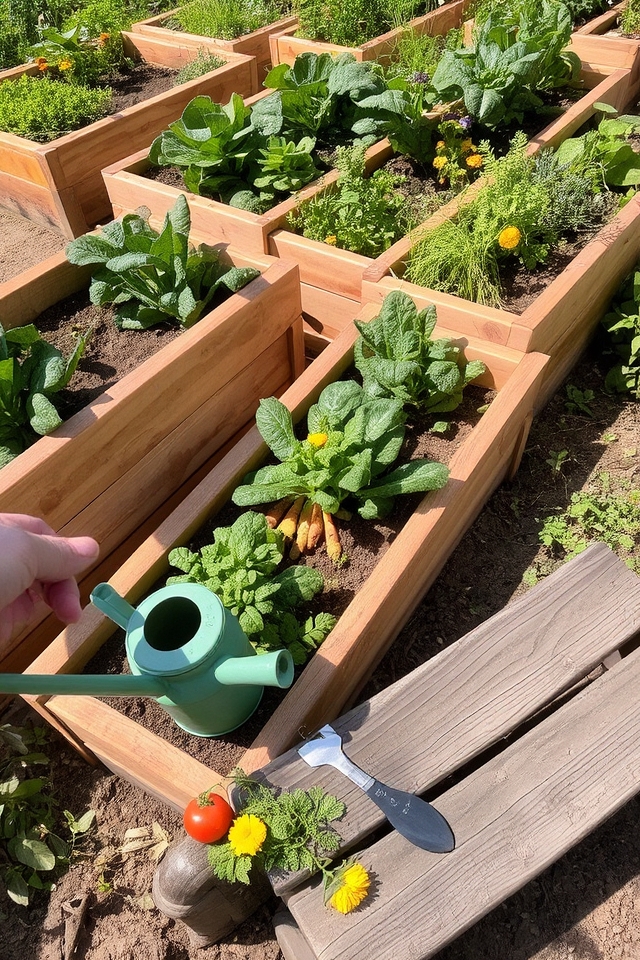
Using raised beds for gardening considerably improves drainage, which is essential for healthy plant growth. The elevation allows excess water to flow away from plant roots, preventing waterlogging and root rot. Raised beds also warm up quicker in the spring, extending the growing season. By filling these beds with a well-balanced mix of soil and compost, you create a prime environment for vegetables and flowers, promoting robust growth and abundant harvests.
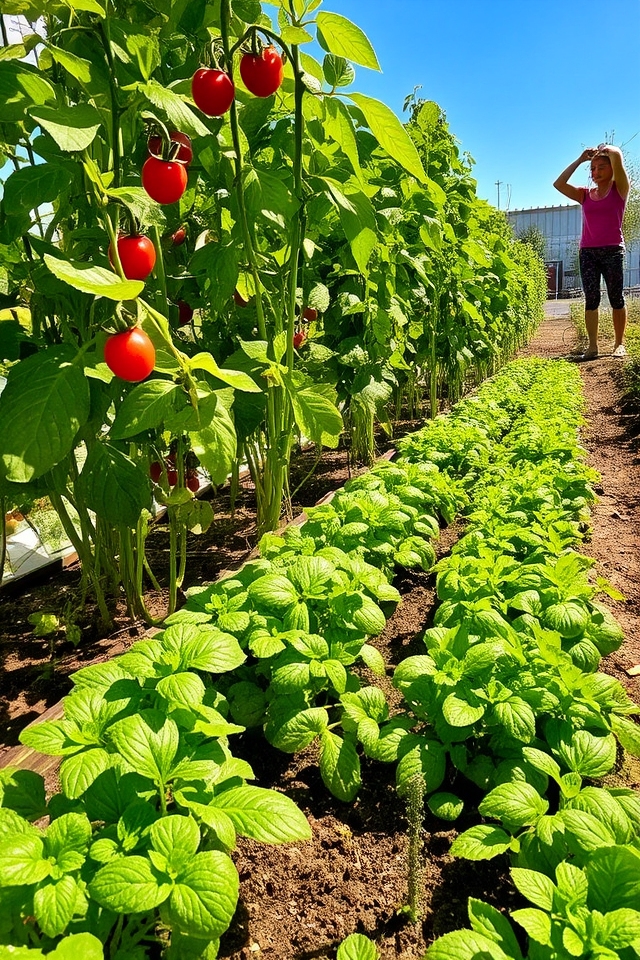
To optimize sunlight exposure in your garden, strategically position your plants to maximize their access to sunlight throughout the day. Choose a location with at least 6-8 hours of direct sunlight, and consider planting taller plants on the north side to avoid shading shorter plants. Additionally, regularly prune and thin out dense foliage to allow light to penetrate deeper into the garden. Monitoring your plants and adjusting their positions as they grow can greatly enhance their growth and yield.
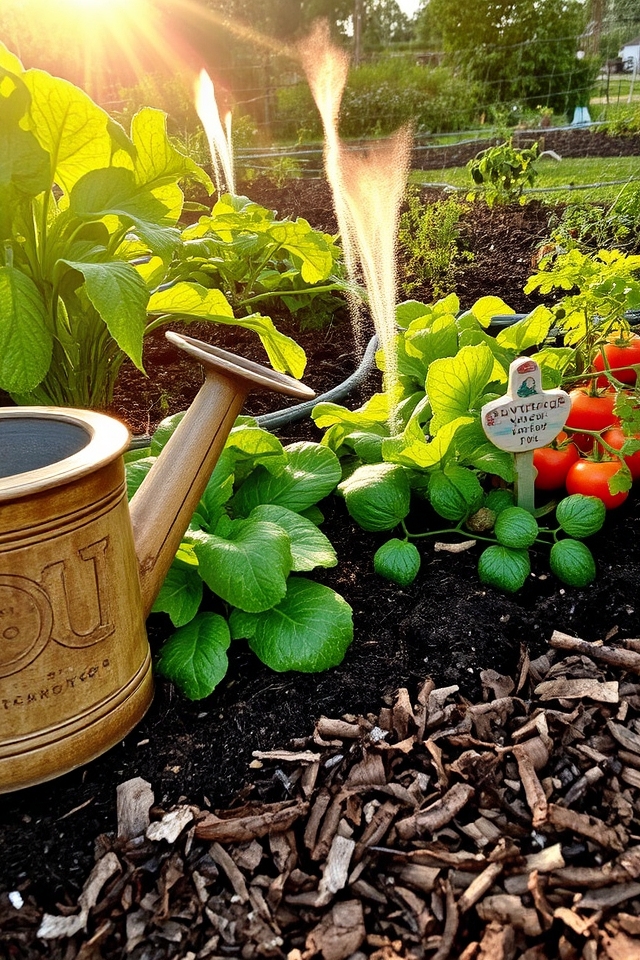
Watering your garden efficiently is vital for resource conservation and plant health. To maximize water use, water your plants deeply but infrequently, encouraging deep root growth. Early morning is the best time to water, reducing evaporation. Implementing mulch can retain soil moisture, while drip irrigation systems directly hydrate the root zone. Monitor weather patterns; during rainy spells, adjust your watering schedule accordingly. This thoughtful approach not only saves water but also promotes a thriving garden.
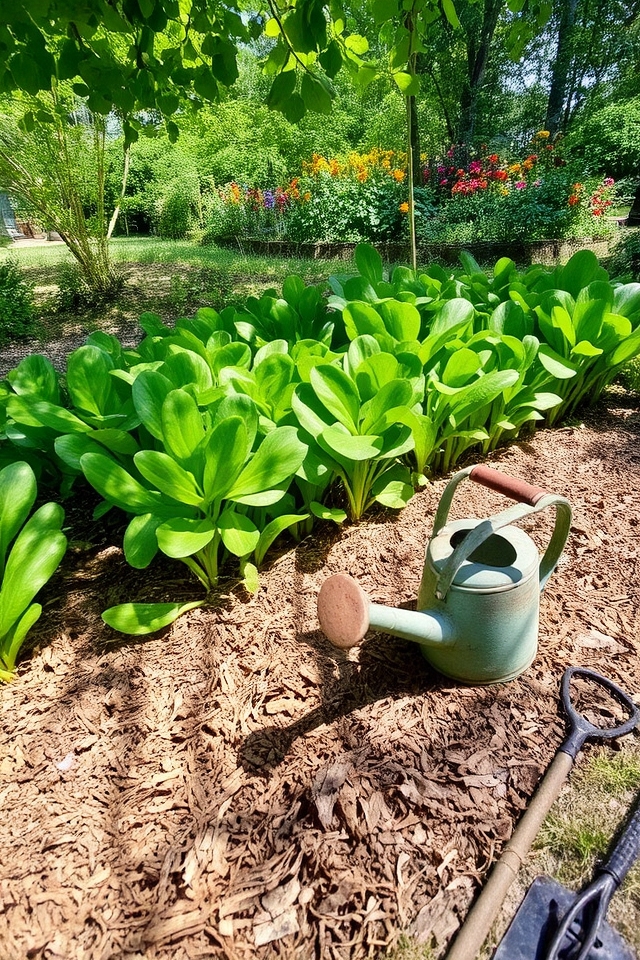
Implementing mulching techniques in your garden can greatly enhance soil health and boost plant growth. A layer of organic mulch—such as straw, grass clippings, or shredded leaves—helps retain moisture, suppress weeds, and regulate soil temperature. Additionally, as the mulch breaks down, it enriches the soil with nutrients. Apply a 2 to 3-inch layer around your plants, ensuring it doesn’t touch the stems, to maximize benefits and maintain an attractive, healthy garden.
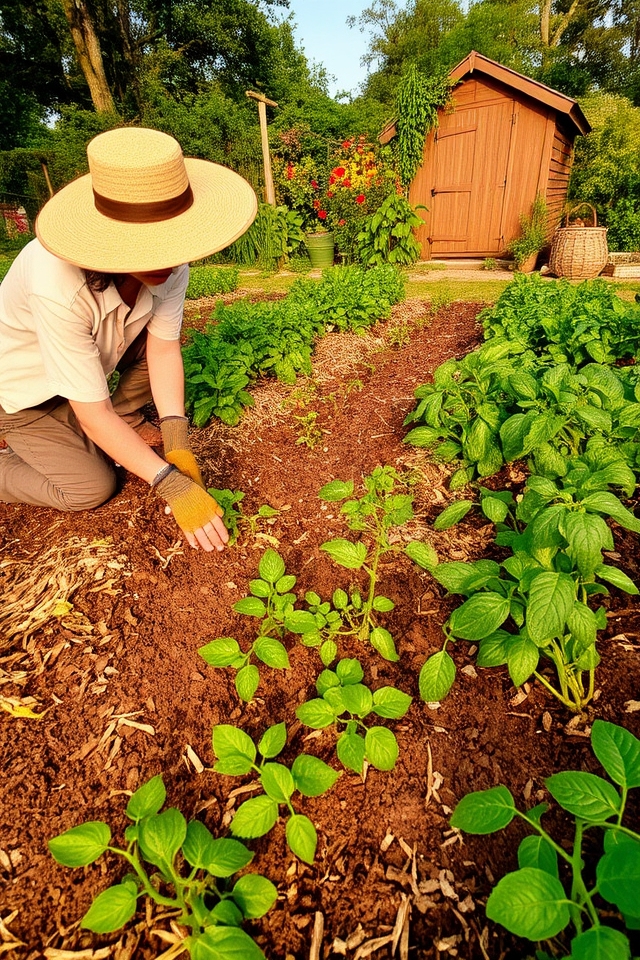
Controlling weeds early is essential for a thriving garden. Weeds compete with your plants for nutrients, water, and sunlight, potentially stunting their growth. To manage weeds, regularly inspect your garden and remove them by hand or use mulch to suppress their growth. Applying a layer of organic mulch, like wood chips or straw, not only blocks sunlight to weed seeds but also retains soil moisture. Early intervention will help guarantee your plants flourish throughout the growing season.
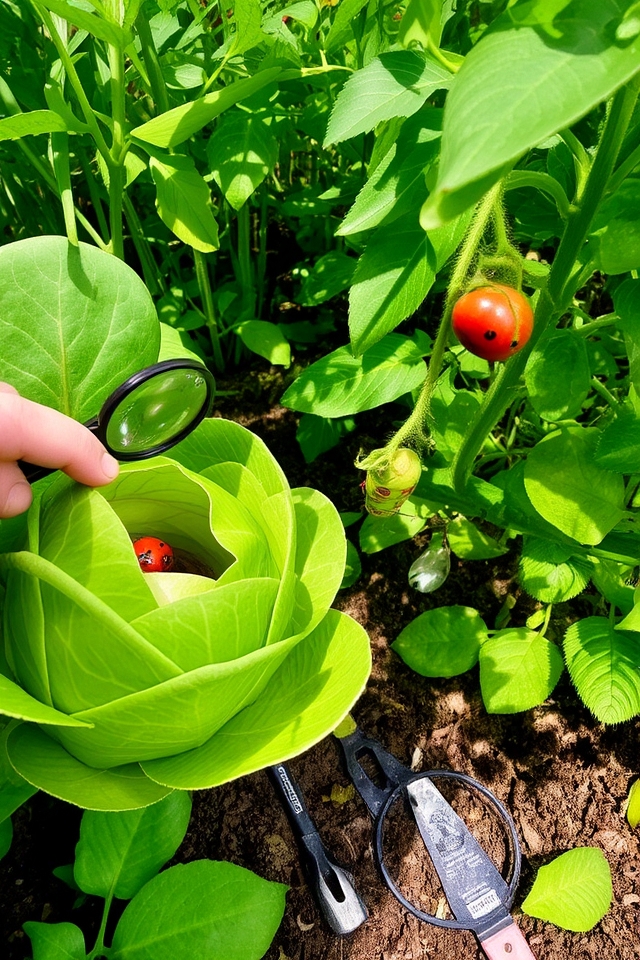
Monitoring for pests regularly is essential for maintaining a healthy garden. Inspect your plants frequently for signs of insect activity, such as holes in leaves, sticky residues, or visible bugs. Early detection allows for prompt intervention, whether through organic treatments or natural predators. Consider setting up traps or encouraging beneficial insects like ladybugs to keep harmful pests in check. A vigilant eye guarantees your garden remains bountiful and thriving throughout the growing season.
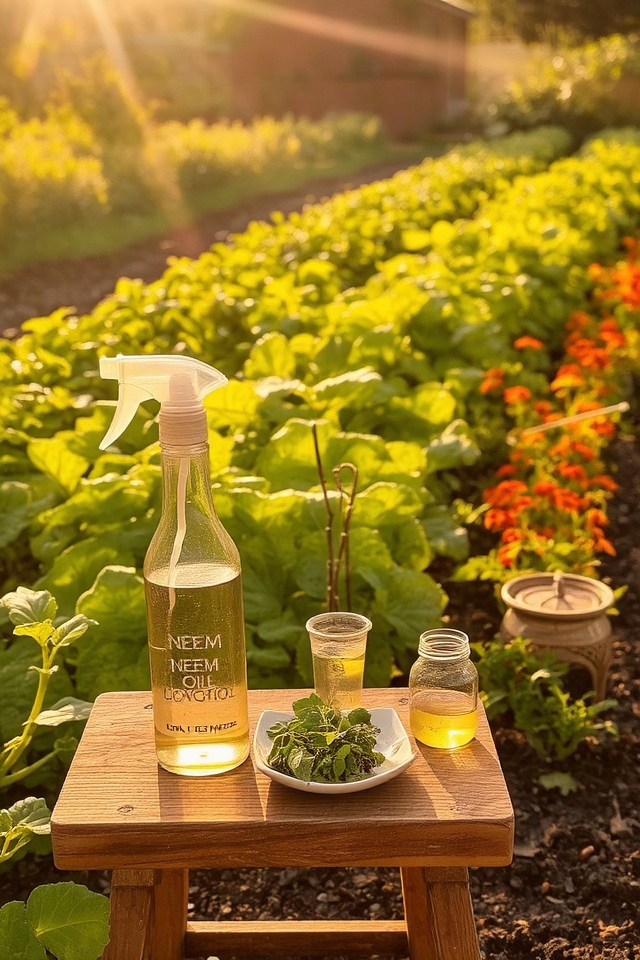
Using organic pest control methods is essential for maintaining a healthy garden while safeguarding the environment. Techniques such as introducing beneficial insects, using neem oil, and creating homemade insecticidal soaps can effectively deter pests without harmful chemicals. Companion planting and maintaining soil health also boost plant resilience against insects. By prioritizing organic strategies, gardeners can enjoy a bountiful harvest while promoting biodiversity and soil fertility in their gardens.
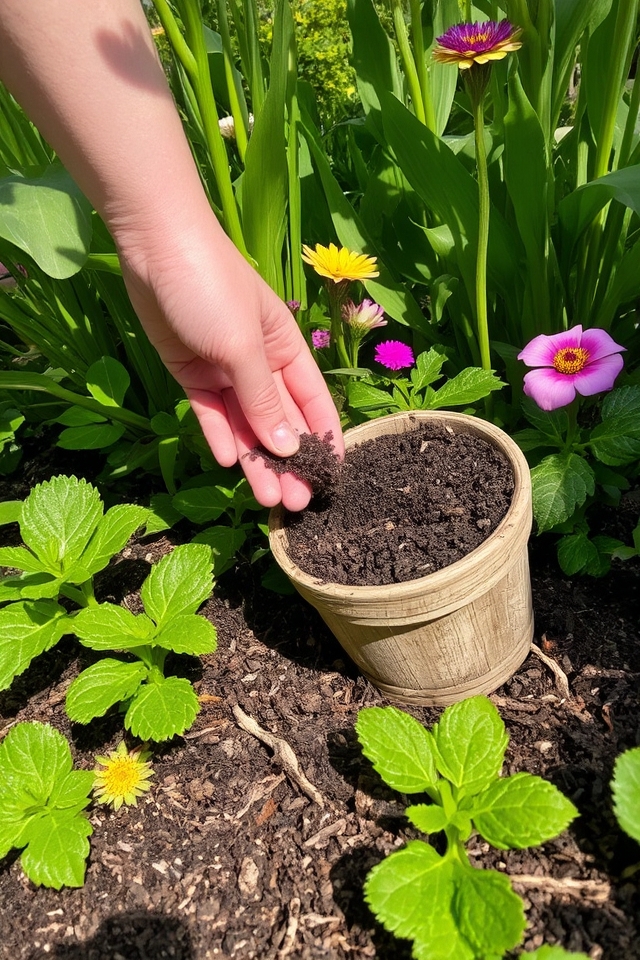
Fertilizing strategically is essential for maximizing your garden’s harvest. Begin by testing your soil to determine nutrient levels and pH balance, allowing you to choose the right fertilizer. Apply organic options like compost or aged manure to enrich the soil naturally. Timing is vital—fertilize at the beginning of the growing season and again during flowering to support plant health and productivity. Be mindful not to over-fertilize, as this can harm plants and degrade soil quality.
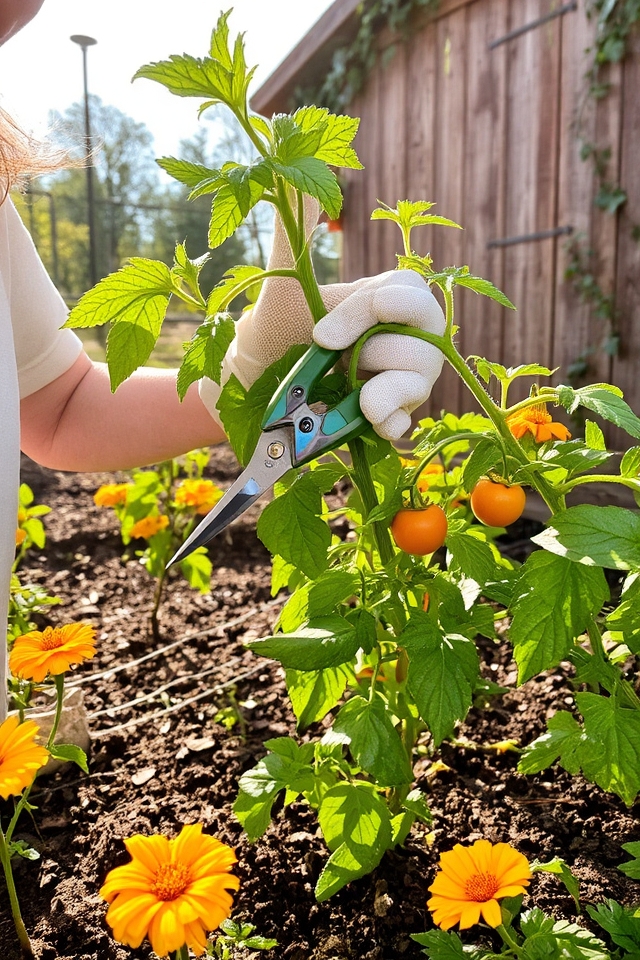
Pruning and trimming are essential practices for maintaining a healthy and productive garden. Regularly removing dead or overgrown branches encourages new growth, improves air circulation, and helps prevent diseases. Focus on pruning during the plant’s dormant season for ideal results, and always use clean, sharp tools to make precise cuts. By shaping your plants properly, you can enhance their structure, encourage fruit and flower production, and ultimately achieve a bountiful harvest.
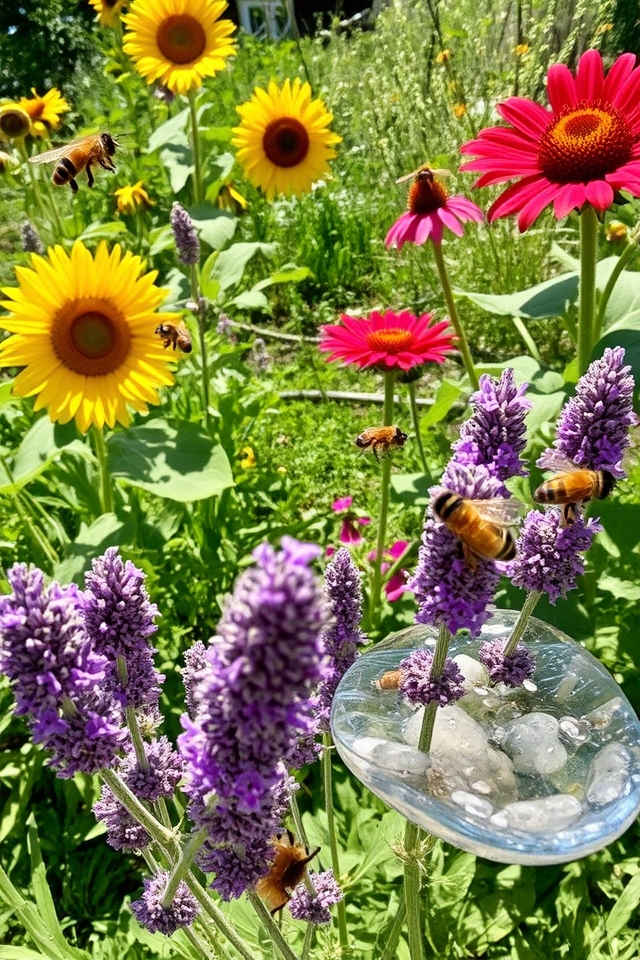
Encouraging pollinators to visit your garden is crucial for a thriving harvest. Planting a diverse array of nectar-rich flowers such as lavender, sunflowers, and bee balm will attract bees, butterflies, and other beneficial insects. Avoid using pesticides, as they can harm these essential creatures. Creating a water source, like a shallow dish with pebbles, can also help. By fostering a pollinator-friendly environment, you enhance fruit and vegetable yields while supporting local ecosystems.
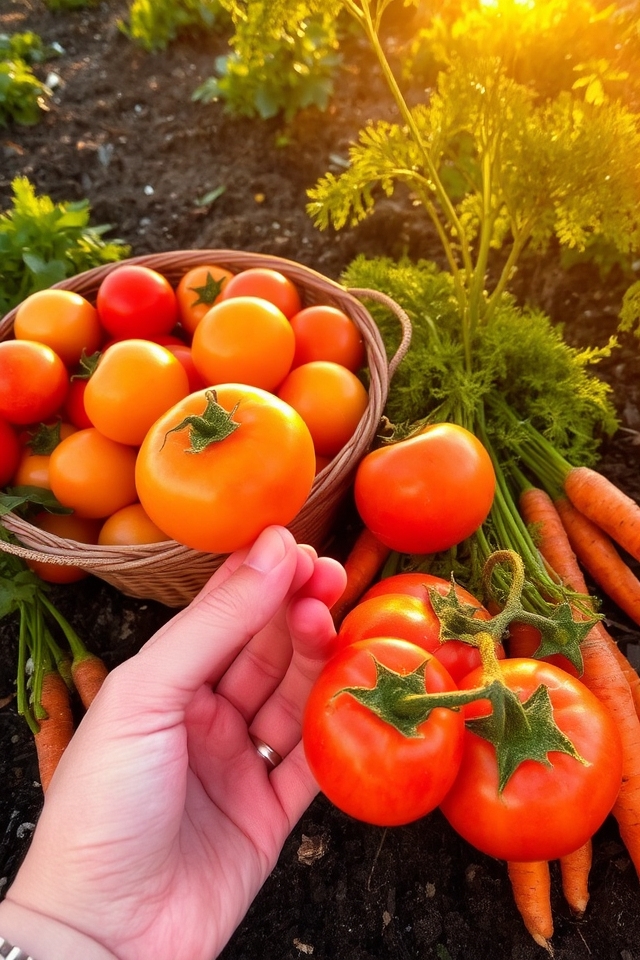
Harvesting at the right time is essential for maximizing the flavor and nutritional value of your garden produce. Each type of vegetable and fruit has its own ideal harvest period, usually indicated by color, size, and firmness. For instance, tomatoes should be picked when they are fully colored and slightly soft, while carrots are best harvested when they reach a suitable size without becoming woody. Regularly check your plants to guarantee you gather your bounty at its peak freshness!
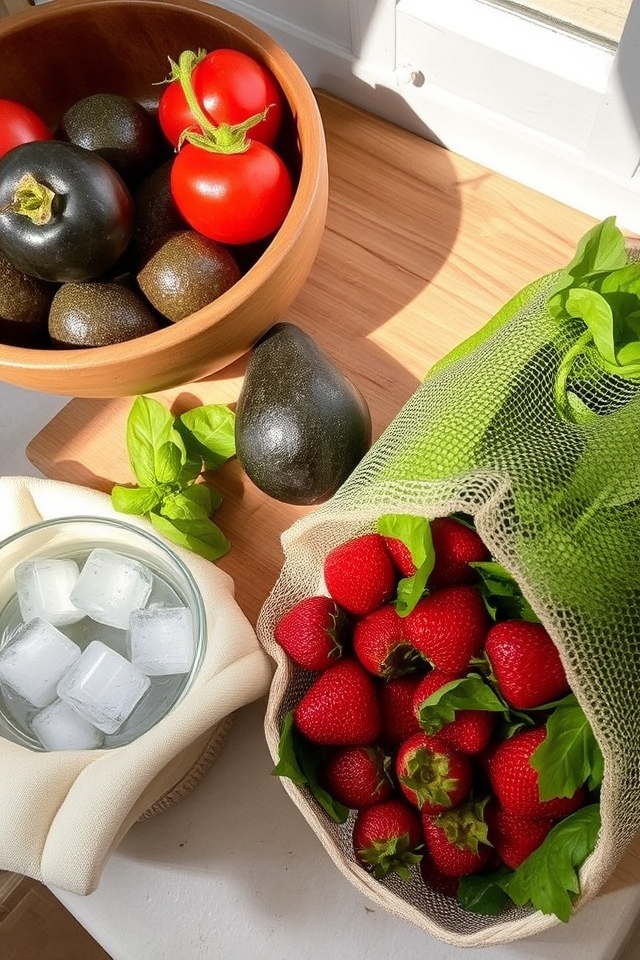
Storing your produce properly is essential for maximizing freshness and flavor. Start by knowing which fruits and vegetables should be stored at room temperature, like tomatoes and avocados, and which prefer refrigeration, such as leafy greens and berries. Use breathable bags, like mesh or paper, to allow airflow while preventing moisture build-up. Also, avoid washing produce before storage; instead, rinse it right before use to reduce spoilage. By following these tips, you can enjoy your bountiful harvest longer!
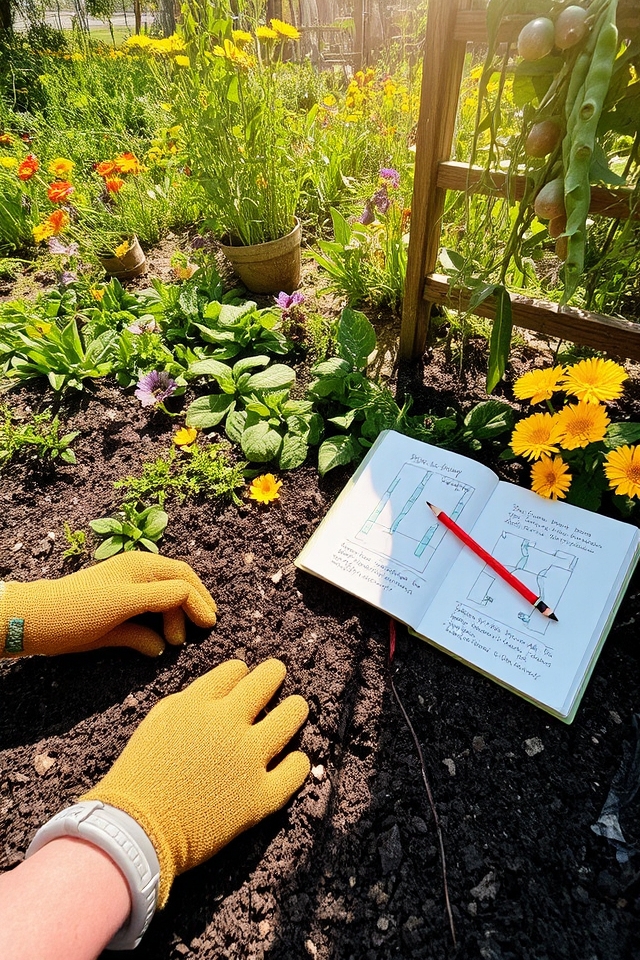
To cultivate a thriving garden, it’s important to keep learning and experimenting with new techniques. Stay updated on gardening trends, attend workshops, or join local gardening clubs to exchange tips with fellow enthusiasts. Don’t hesitate to try different planting methods, crop rotations, or organic pest control. Document your results to discover what works best in your unique environment. Embracing a mindset of curiosity will not only enhance your gardening skills but also make the experience more enjoyable.
By following these tips, you can transform your garden into a flourishing oasis of productivity. Think of your garden as a well-tuned orchestra; each element plays an essential role in creating a harmonious harvest. With the right soil, plants, and care, you’ll not only enjoy bountiful yields but also develop a deeper connection to nature. Keep experimenting and adapting, and before you know it, you’ll be reaping the rewards of your hard work throughout the season.

Don't let aphids, slugs, and caterpillars ruin another plant. Take back control with simple, natural methods that actually work.